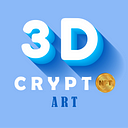Breaking Down Fractional NFTs: A Comprehensive Guide to Fractional Ownership in the Digital World
Fractional NFTs, also known as fractionalized NFTs, are a new type of non-fungible tokens that are changing the way people invest in and own digital assets. By allowing multiple investors to own a fractional share of an NFT, fractional NFTs have opened up the world of digital assets to a wider audience, making it possible for more people to invest in unique and valuable assets that would otherwise be too expensive or too exclusive for most people to own.
In this blog post, we will explore everything you need to know about fractional NFTs, including what they are, how they work, and why they are changing the way people invest in and own digital assets. If you want to know more, keep reading and be a part of our community at Discord!
What are Fractional NFTs?
Fractional NFTs are a type of non-fungible token that represents a fractional share in a valuable asset. Non-fungible tokens cannot be replicated or divided into smaller units. This makes them ideal for representing unique and valuable assets such as artwork, collectibles, and real estate.
Fractional NFTs work by allowing multiple investors to pool their resources and purchase a share in an NFT, which can then be divided into smaller fractions and sold to individual investors. For example, if an NFT representing a piece of artwork is valued at $100,000, investors can pool their resources and purchase the NFT for $100,000. The NFT can then be divided into 1,000 fractional shares, each representing a $100 share in the artwork. These fractional shares can then be sold to individual investors, who can own a share in the artwork without having to pay the full $100,000.
How do Fractional NFTs Work?
Fractional NFTs are created using a process called tokenization, which involves converting a physical or digital asset into a digital token that can be stored on a blockchain. This process involves taking a unique identifier for the asset, such as a serial number or a digital signature, and creating a digital representation of that identifier on the blockchain.
Once the asset has been tokenized, the NFT can be divided into smaller fractions using a smart contract. Smart contracts are self-executing programs that are stored on the blockchain and can be programmed to perform specific actions when certain conditions are met. In the case of fractional NFTs, the smart contract is programmed to divide the NFT into smaller fractions and distribute those fractions to individual investors.
Investors can then purchase these fractions using cryptocurrencies, such as Ethereum or Bitcoin. The smart contract ensures that each investor receives a proportional share of the NFT and that the ownership of the NFT is recorded on the blockchain.
Why are Fractional NFTs Important?
Fractional NFTs are important for several reasons:
First, they allow more people to invest in unique and valuable assets that would otherwise be too expensive or too exclusive for most people to own.
Second, fractional NFTs increase liquidity in the market for digital assets. By allowing investors to buy and sell fractional shares in an NFT, fractional NFTs make it easier for investors to enter and exit the market, which can help to increase demand for digital assets and drive up prices.
Finally, fractional NFTs have the potential to democratize the ownership of valuable assets. By allowing investors from all over the world to own a share in an NFT, fractional NFTs can help to break down barriers to ownership and make valuable assets more accessible to a wider audience.
What are the Risks of Fractional NFTs?
While fractional NFTs offer many benefits, there are also some risks associated with investing in them. First and foremost, investing in fractional NFTs is still a relatively new and untested market. As with any new investment opportunity, there is a risk that the market may not develop as expected, or that the underlying assets may not appreciate in value as anticipated.
Another risk is that the value of the underlying asset may be difficult to determine. Unlike stocks or other traditional investments, there may not be a clear market price for a particular asset represented by an NFT. This can make it difficult for investors to determine whether they are paying a fair price for a fractional share in an NFT.
Finally, there is the risk of fraud or theft. Because NFTs are stored on a blockchain, they are vulnerable to hacking or other types of cyber attacks. Investors should take steps to protect their investments, such as using a reputable platform to purchase fractional NFTs and storing their digital assets in a secure digital wallet.
Conclusion
Fractional NFTs are a new and exciting development in the world of digital assets. By allowing investors to own a fractional share in valuable assets such as artwork, collectibles, and real estate, fractional NFTs have opened up the market to a wider audience and increased liquidity in the market. However, as with any investment opportunity, there are risks associated with investing in fractional NFTs. Investors should carefully consider these risks before investing and take steps to protect their investments. Overall, fractional NFTs represent an innovative and potentially transformative development in the world of investing and ownership of valuable assets.
Do you have any further questions? Let us know in the comments below or DM us on Instagram!
